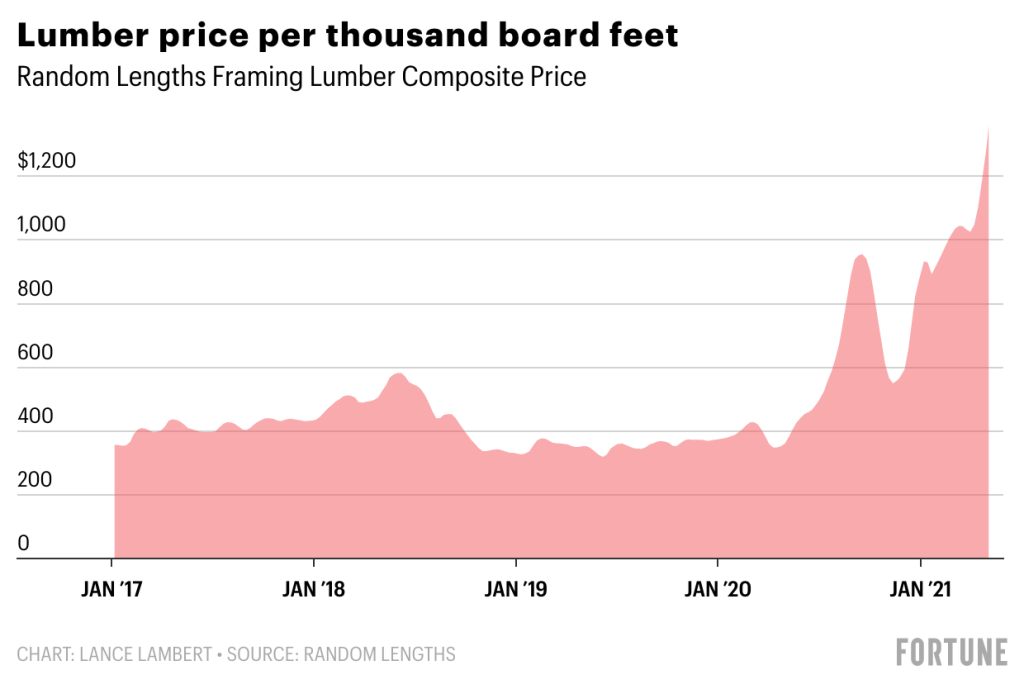Get Things Done—Step 5: Engage
November 23, 2021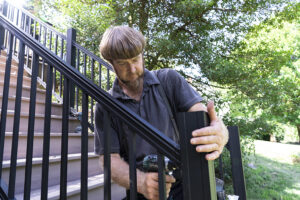 “Engage,” the fifth step of the five-step process that David Allen describes in his book Getting Things Done: The Art of Stress-Free Productivity is mission-critical for contractors. It’s all about making wise choices to ensure you spend your energy on what’s most important at any given point in time.
“Engage,” the fifth step of the five-step process that David Allen describes in his book Getting Things Done: The Art of Stress-Free Productivity is mission-critical for contractors. It’s all about making wise choices to ensure you spend your energy on what’s most important at any given point in time.
“Engage” entails deciding what action you will do right now, based on what you’ve captured, clarified, organized, and reflected on.
THE FOUR-CRITERIA MODEL FOR CHOOSING ACTIONS IN THE MOMENT
One of Allen’s models for successfully engaging involves considering four criteria when choosing what action you should take.
- Context: Your work setting—and tools and resources available there—will influence your actions. Not all tasks can be done from anywhere at any time. For example, if you’re in your office, furthering the build of a customer’s deck isn’t an action you can accomplish at that immediate moment.
- Time Available: What’s next on your schedule will dictate what you can do right now. For example, if you have a meeting in 10 minutes or are due to be at a job site in a half-hour, you may want to wait to tackle preparing a new customer proposal. If you rush through it, you might miss critical details and make costly mistakes.
- Energy Available: Some activities require that you’re physically or mentally rested and refreshed to do them well. So, if you need to call or meet with a difficult customer, you may want to hold that conversation in the morning before the day’s other demands have tested your patience.
- Priority: After considering the first three criteria, you can determine the order in which you’ll act on your tasks. Which option is the most urgent and will yield the biggest payoff if you do it right now? You’ll need to use good judgment in deciding what to do first, second, third, etc., to advance you toward your goals.
We hope you found this article series on Getting Things Done helpful. Stay tuned for more tips and insight for running a successful business in future articles!
Product Spotlight: Chesapeake Series Railing by Key-Link™
September 28, 2021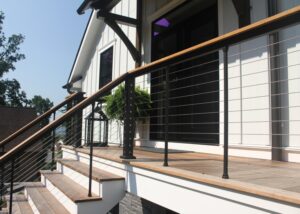
Homeowners who enjoy entertaining friends and family on their decks will love the new Key-Link™ Chesapeake Series railing! The attractive top rail, uniquely designed for deckboard, provides a perfect place for food plates and beverages while your guests are socializing.
Installation couldn’t be easier! Simply lay a composite, PVC, or wood deckboard on the top rail profile and fasten it. The railing comes with pre-drilled holes every 12 inches (in hidden channels). Fasteners are included, and installers don’t have to deal with special brackets.
CHESAPEAKE SERIES RAILING INCLUDES:
- Top rail profile of choice
- Bottom rail (not applicable with horizontal cable)
- Vertical cable or square infill
- Brackets and fasteners
- Comprehensive installation guide
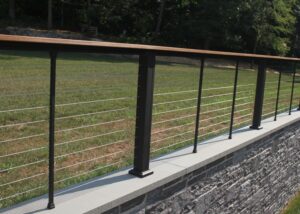
Chesapeake railing, manufactured locally in New Holland, Pennsylvania, comes in one standard color (textured black)* and three standard infills: square balusters, horizontal cable, and vertical cable. Presently, Chesapeake works best on decks with 90-degree angles. Eventually, Key-Link will offer swivel brackets to accommodate decks with different angle configurations. More accessories are on the way, too.
Key-Link has specially engineered Chesapeake to make drink-rail installation easy for contractors and give homeowners the ultimate outdoor entertaining space they’ve dreamed of!
For more information and to order this sleek and functional product, contact us!
*Additional colors available via special order
Perspective: Ebb & Flow of Building Materials Prices
“The only constant in life is change.”
That quote by the Greek philosopher Heraclitus has become especially true for contractors and their customers! The cost of building materials keeps going up and down as the pandemic throws more twists and turns our way.
We’re all frustrated with the pricing uncertainty. It’s difficult to plan ahead and even more challenging to explain increases to homeowners.
Fortunately, the manufacturers that Homestead Outdoor Products works with have been very conscientious about keeping us informed. They do their best to provide products reliably and as affordably as possible.
Still, changes happen—upward and downward—when the supply/demand equilibrium goes out of balance.
SCENARIOS WHEN PRICES RISE
- Demand has skyrocketed.
- There are backlogs or bottlenecks in production because of unanticipated demand or a drop-off in the workforce.
- Transport and delivery delays or cancellations occur (of raw materials or finished products).
SCENARIOS WHEN PRICES FALL
- Excess inventory needs to be moved.
- There’s less demand for the products.
- Something new and improved has been introduced to the market.
The evolving pandemic will continue to influence building materials pricing.
SO, WHAT CAN YOU DO?
Stay in the know about where the industry is trending—and watch for notifications from us about any upcoming changes. Some more changes will be inevitable, but find peace of mind in knowing that our free-market economy will help prices level out in the long run.
We’re fortunate to have the advantage of LOTS of supplier competition in the building materials industry, which helps ensure that cost increases aren’t in vain and that decreases will follow when economic conditions improve.
Get Things Done—Step 4: Reflect
“Reflect” is the fourth step in the five-step process described in David Allen’s book Getting Things Done: The Art of Stress-Free Productivity.
“Reflect” involves regularly taking time to review what you’ve captured, clarified, and organized. The needs and priorities of your business will change over time; what you identified as necessary a month ago may no longer be relevant today. Reflecting serves to keep you on track and make sure you’re doing what you need to be doing. It lets you reaffirm that your to-do list is current so you can focus your energy and attention effectively. Plus, it helps you stay aware of tasks that may not impact short-term success but must be completed to reap significant long-term benefits.
PRACTICAL TIPS FOR REFLECTING PURPOSEFULLY
- Set aside a dedicated day and time of the week—such as early Saturday morning as you enjoy a cup of coffee—to review your calendar and to-do list.
- Schedule time to clean out your “in” boxes. This means all of them, whether physical or online—your USPS mailbox, notes on your desk, email, and the cab of your work truck. Approach this task as if you were going on vacation for a week, aiming to tackle everything important (and remove anything irrelevant) so that you have nothing critical looming over your head.
- Encourage your crew leaders to keep a list of to-dos for the upcoming week and present them to their workers every Friday. Gathering the team together for an hour in the afternoon before the weekend can help everyone prepare the tools and materials they’ll need for projects the following week. It will help them hit the ground running productively on Monday!
Stay tuned for our next issue when we’ll discuss the critical “Engage” step.
Product Spotlight: Cascadia Railing System
July 28, 2021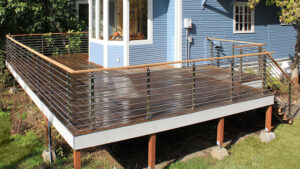
Many customers prefer a sleek, contemporary design for their outdoor living spaces. At the forefront of that trend is the Cascadia railing system by AGS Stainless, Inc., which provides durability and a clean, tailored look without the need for custom design work.
Homestead Outdoor Products now sells Cascadia railing components, including top-mount posts, stainless steel horizontal bar infills, and more! Posts are available in 36” or 42” sizes, and adjustable tops and infill knuckles allow for sloped installation. AGS Stainless fabricates its railing components in-house to ensure consistent execution and the highest quality. Personalize the end-product to your customers’ style preferences with their choice of top rail (not included in the Cascadia railing system).
Call us to learn more about this attractive, high-quality, easy-to-install product!
Deck Flashing Makes a Difference
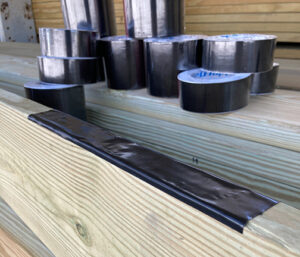 In fact, it can make a BIG difference when you consider that some contractors ignore this vital step in protecting their customers’ investment.
In fact, it can make a BIG difference when you consider that some contractors ignore this vital step in protecting their customers’ investment.
The Problem
While decking and railing materials continue to evolve, providing long-lasting curb appeal and low maintenance, the wooden foundations underneath them often fail to keep up. Even pressure-treated wood becomes prone to moisture, water damage, and rotting.
Consider that the minimum residential warranty for brand-name decking is 25 years. Railing is at least that (typically much more). With that kind of lifespan for top materials, doesn’t it make sense to take measures to expand the life of the deck’s frame, too?
The Solution
Fortunately, there’s an easy way to give a deck’s wood components the protection they need to withstand time, wear and tear, and weather: flashing (joist) tape!
Secured on deck joists, beams, and ledger boards, flashing tape creates a waterproof seal to protect a deck’s foundational components. For example, the Nichigo G-Tape™ acrylic flashing tape that we carry offers exceptional adhesion, holds up under extreme temperatures and humidity, and is easy and very affordable to install. Flashing tape can add years to a deck’s longevity at just a minimal amount of cost.
Set Yourself Apart
Why not take the small amount of time and effort required to offer and install flashing tape on your deck projects? It will give you an excellent opportunity to stand out from your competitors and show your customers you care about the long-term value of their investment.
Featured Homestead Outdoor Products Video—Decking: PVC vs. Composite
Ready. Camera. Action! In this video, Ken Burkholder explains the difference between PVC and composite decking. Watch today to learn the pros and cons of each and get tips for deciding which one will be best for your projects.
Visit www.homesteadoutdoorproducts.com/videos to see this video and also to tune in to our other helpful videos—and watch for more!
Get Things Done—Step 3: Organize
 “Organize” is the third step in the five-step process described in David Allen’s book Getting Things Done: The Art of Stress-Free Productivity.
“Organize” is the third step in the five-step process described in David Allen’s book Getting Things Done: The Art of Stress-Free Productivity.
“Organize” involves taking all the information and to-dos you’ve collected in Allen’s first two steps (capture and clarify) and categorizing and prioritizing them. In other words, it means getting organized so that you can get things done!
Tips for Organizing
- Keep project plans (for multi-step to-dos) on a list and in a place where you can easily access them.
- Schedule project tasks on a calendar or in some other type of project management tool.
- Consider keeping a “Next Action” list to stay on top of what you’re waiting on and what must be done next.
- Use what works best for you! Lists and files can be physical, digital, or both.
- Avoid the trap of keeping the same type of information in different locations. For example, keep your customer leads in a single place. Don’t record some of them in a spiral notebook, others in a note app on your phone, and then a few on sticky notes on your desk. It’s far too easy to let something slip through the cracks if you don’t keep what you need in a central place.
- Capture—on your calendar—only what’s critical and time-sensitive for that day. Keep non-urgent items on your “Next Action” list.
- Don’t jam too many to-dos in a single day. If you overpromise and overextend yourself, you will risk failing to fulfill deadlines.
- Have a spot for storing info and tasks that aren’t urgent but may require you to address them someday. For example, say you want to sharpen your bookkeeping skills but don’t have time currently to pursue a webinar or class. Put it on a “Someday” list.
- Review your lists and calendar regularly, and update and reorganize them if needed. (We’ll cover this tip in our next newsletter.)
Stay tuned for our next issue of The Homestead Post when we’ll discuss the important “Reflect” step!
Welcome Our New Inside Sales Reps
June 9, 2021We are happy to announce that David Batturs and Dave Wenrich have joined the Homestead Outdoor Products family. As inside sales representatives, a few of their responsibilities include writing material quotes and orders, researching and sharing information with employees and customers, and assisting our customers with their orders.

David Batturs
David has enjoyed a career in construction equipment sales, including 20 years as a manager. He brings extensive experience in working to serve customers’ needs and coordinating efforts with fellow employees.
Although a lifelong Lancaster County resident, David enjoys traveling. In fact, he has literally been around the world—a trip to India in 1997 took him clear across the globe!

Dave Wenrich
Dave has worked in the construction industry for over 40 years as a carpenter. He has firsthand experience installing many of the products that Homestead Outdoor Products sells.
Middletown is his home, and he has lived in the Lancaster/Dauphin County area for 55 years. Dave and his wife, Cara, have been married for 27 years and have four children (David, 22; Quinn, 20; Clark, 13; and Ruthie, 11). On the family’s 5-acre mini-farm, the Wenrichs raise chickens, ducks, geese, and goats. They also enjoy bowling and spending time with their four dogs.

